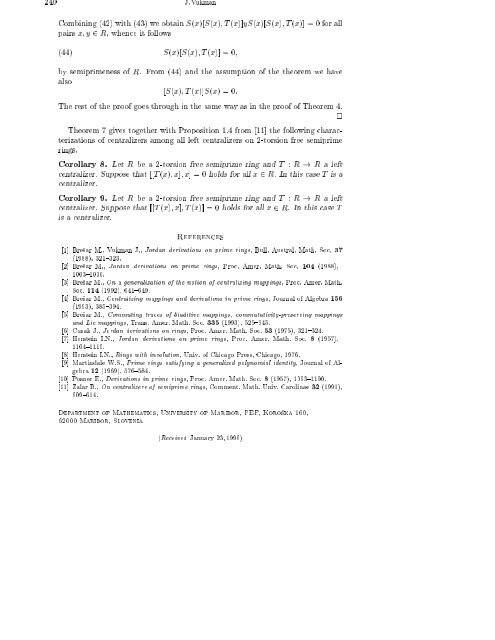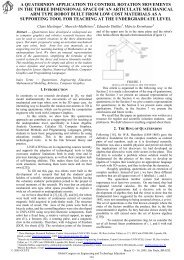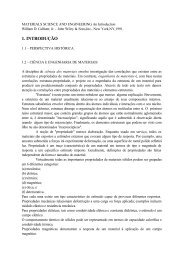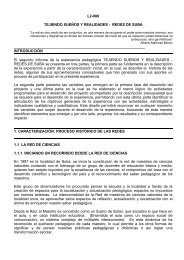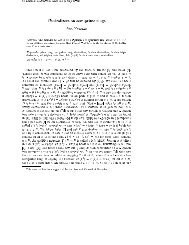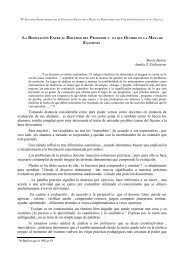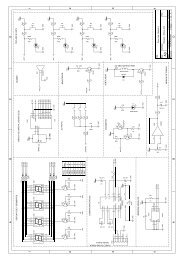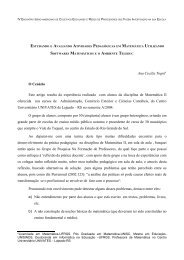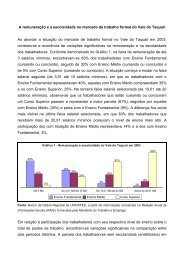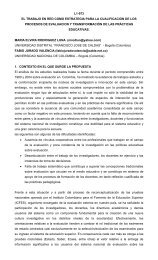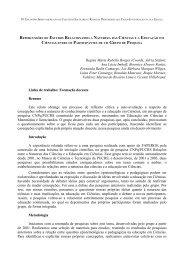Centralizers on prime and semiprime rings
Centralizers on prime and semiprime rings
Centralizers on prime and semiprime rings
You also want an ePaper? Increase the reach of your titles
YUMPU automatically turns print PDFs into web optimized ePapers that Google loves.
240 J. Vukman<br />
Combining (42) with (43) we obtain S(x)[S(x);T(x)]yS(x)[S(x);T(x)] = 0 for all<br />
pairs x; y 2 R, whence it follows<br />
(44) S(x)[S(x);T(x)] = 0;<br />
by semi<strong>prime</strong>ness of R. From (44) <strong>and</strong> the assumpti<strong>on</strong> of the theorem we have<br />
also<br />
[S(x);T(x)]S(x) =0:<br />
The rest of the proof goes through in the same way as in the proof of Theorem 4.<br />
<br />
Theorem 7 gives together with Propositi<strong>on</strong> 1.4 from [11] the following characterizati<strong>on</strong>s<br />
of centralizers am<strong>on</strong>g all left centralizers <strong>on</strong> 2-torsi<strong>on</strong> free semi<strong>prime</strong><br />
<strong>rings</strong>.<br />
Corollary 8. Let R be a 2-torsi<strong>on</strong> free semi<strong>prime</strong> ring <strong>and</strong> T : R ! R a left<br />
centralizer. Suppose that [[T (x);x];x]=0holds for all x 2 R. In this case T is a<br />
centralizer.<br />
Corollary 9. Let R be a 2-torsi<strong>on</strong> free semi<strong>prime</strong> ring <strong>and</strong> T : R ! R a left<br />
centralizer. Suppose that [[T (x);x];T(x)] = 0 holds for all x 2 R. In this case T<br />
is a centralizer.<br />
References<br />
[1] Bresar M., Vukman J., Jordan derivati<strong>on</strong>s <strong>on</strong> <strong>prime</strong> <strong>rings</strong>, Bull. Austral. Math. Soc. 37<br />
(1988), 321{323.<br />
[2] Bresar M., Jordan derivati<strong>on</strong>s <strong>on</strong> <strong>prime</strong> <strong>rings</strong>, Proc. Amer. Math. Soc. 104 (1988),<br />
1003{1006.<br />
[3] Bresar M., On a generalizati<strong>on</strong> of the noti<strong>on</strong> of centralizing mappings, Proc. Amer. Math.<br />
Soc. 114 (1992), 641{649.<br />
[4] Bresar M., Centralizing mappings <strong>and</strong> derivati<strong>on</strong>s in <strong>prime</strong> <strong>rings</strong>, Journal of Algebra 156<br />
(1993), 385{394.<br />
[5] Bresar M., Commuting traces of biaditive mappings, commutativity-preserving mappings<br />
<strong>and</strong> Lie mappings, Trans. Amer. Math. Soc. 335 (1993), 525{545.<br />
[6] Cusak J., Jordan derivati<strong>on</strong>s <strong>on</strong> <strong>rings</strong>, Proc. Amer. Math. Soc. 53 (1975), 321{324.<br />
[7] Herstein I.N., Jordan derivati<strong>on</strong>s <strong>on</strong> <strong>prime</strong> <strong>rings</strong>, Proc. Amer. Math. Soc. 8 (1957),<br />
1104{1110.<br />
[8] Herstein I.N., Rings with involuti<strong>on</strong>, Univ. of Chicago Press, Chicago, 1976.<br />
[9] Martindale W.S., Prime <strong>rings</strong> satisfying a generalized polynomial identity, Journal of Algebra<br />
12 (1969), 576{584.<br />
[10] Posner E., Derivati<strong>on</strong>s in <strong>prime</strong> <strong>rings</strong>, Proc. Amer. Math. Soc. 8 (1957), 1093{1100.<br />
[11] Zalar B., On centralizers of semi<strong>prime</strong> <strong>rings</strong>, Comment. Math. Univ. Carolinae 32 (1991),<br />
609{614.<br />
Department of Mathematics, University of Maribor, PEF, Koroska 160,<br />
62000 Maribor, Slovenia<br />
(Received January 23, 1996)


